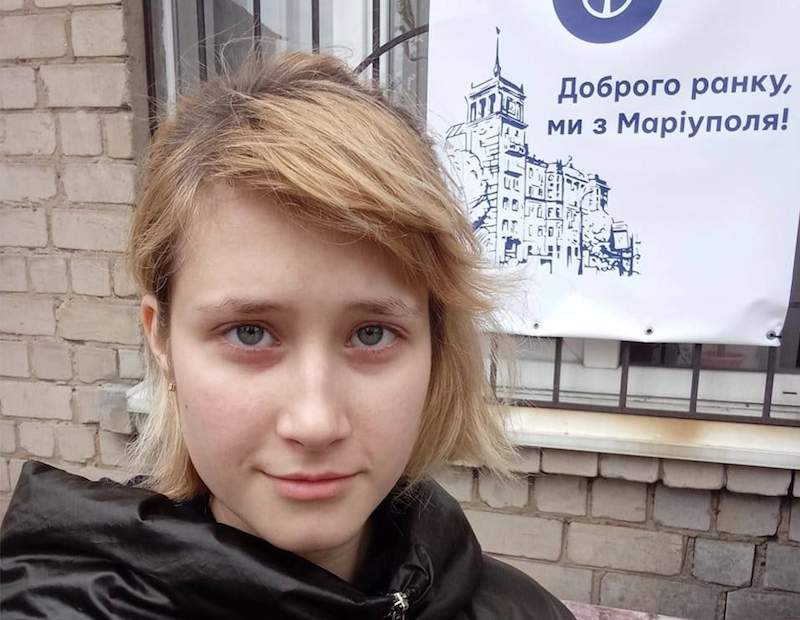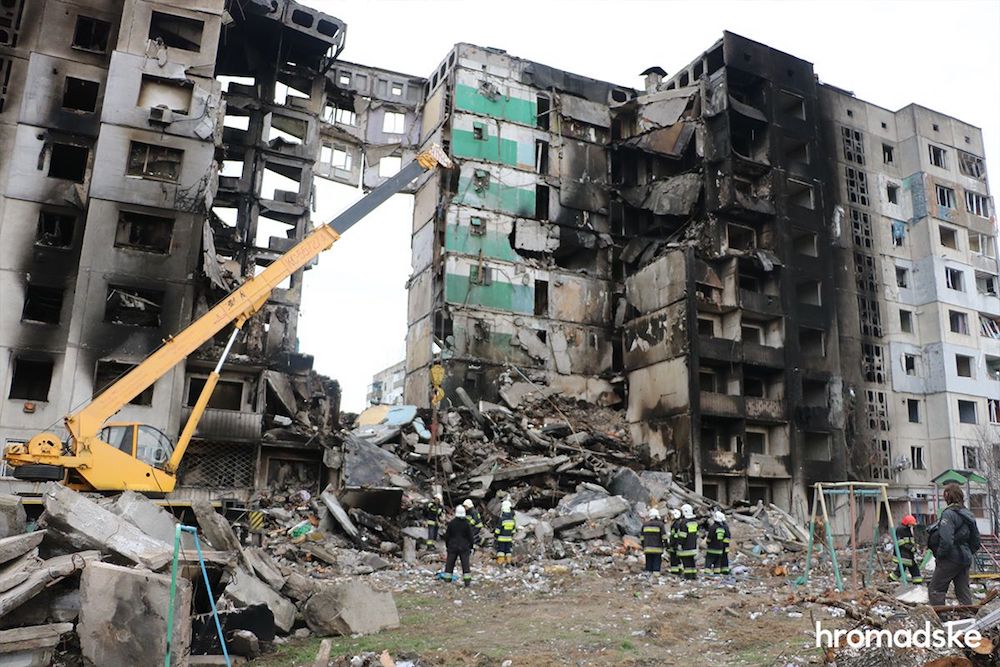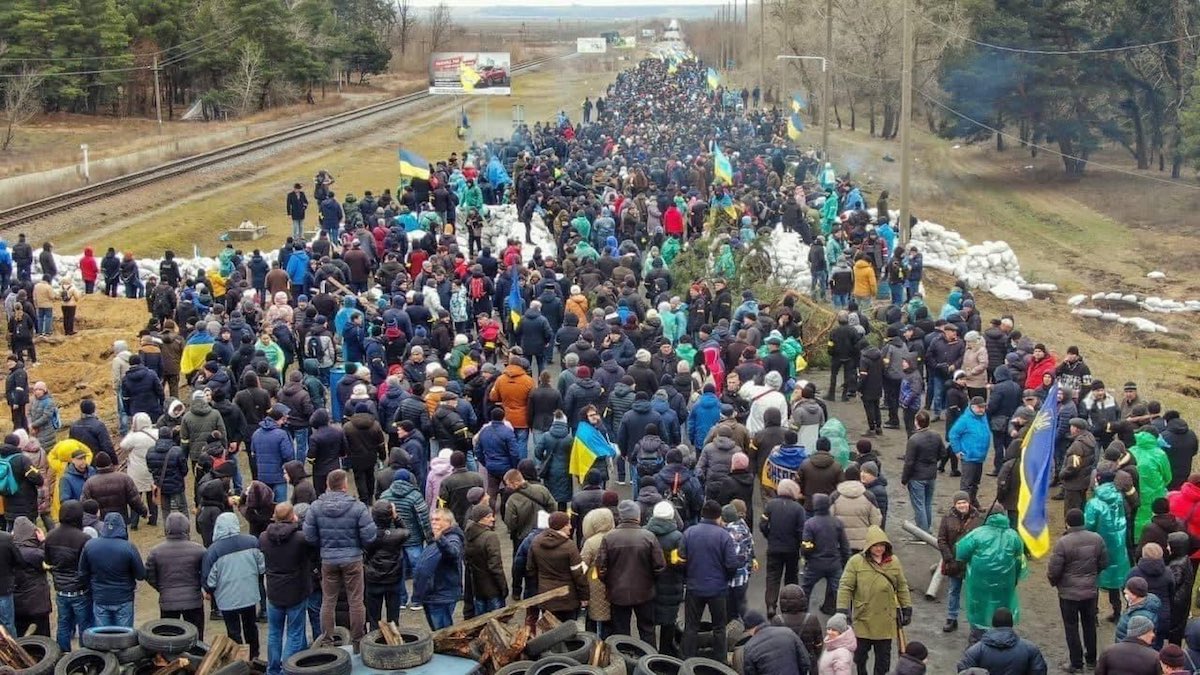"Yagodnoye concentration camp" - a story of Ukrainian village liberated from Russian occupation
Ukrainian village that lived through Russian occupation
Ukrainian publication Hromadske reports from a village in northern Ukraine that was occupied by Russian troops for a month after the Russian invasion of Ukraine began.
The doors in the basement of the school in the village of Yagodnoe have become a symbol of the hell that the locals had to endure. On them they marked the days that they spent here. On the right they wrote the names of people who died immediately, on the left – the names of those who were shot by the occupiers. In fact, the local Ukrainians spent a month in a Russian concentration camp.
They drove people to the basement to save from the “banderites”
The village of Yagodnoe is located 12 kilometers south of Chernihiv. Back in the first days of March, Russian troops entered it.
Galina lives in the house closest to the local school. The pensioner recalls that on Wednesday, March 2, she saw military equipment. The woman did not immediately understand that it had belonged to the occupiers. There were marks on the technique – white circles. And soon it became clear to everyone: the village was captured.
Galina notes that she felt the new orders very soon. The Russians broke into her through the window. At the neighbors – in the house there are several apartments – they broke their doors. “They drove up the armored personnel carrier and started shooting at the windows. I heard them climbing through the window into the house. Then they came in and said: “Open the door”, says the pensioner.
Galina spent the night at home, and at 7 in the morning she was kicked out of the house. “They said: “We will take you to the basement”. One soldier escorted us. Nobody explained anything. I was so scared that I still can’t recover from it”, the woman recalls.
At first, Taisiya Petrovna was not driven into the basement – her husband walks on crutches, he has a third disability group, so the spouses were left at home. But not for long: in the evening they came for them again. “They drove a car, pointed machine guns at us and said: “You will go to where everyone is”. And he had to go there, to the basement. Our guys helped him get down, and he lay there for a month. Now he is at home, unable to walk. He used to walk with sticks, now he doesn’t walk at all”, says Taisiya Petrovna.
- “Shot in the back of the head” – evidence of Russia’s war crimes in Ukraine. Photo report
- “Ukraine is repsonsible for the war it is losing” – who spreads pro-Russian propaganda in Georgia
All the inhabitants of the village were driven into the basement – about 350 people. The invaders explained that in this way they were saved. “We were told that we had to go to the basement, because banderites would attack, and we had to save ourselves from them”, recalls Taisiya Petrovna.
“All people from our village were taken there: both bedridden and walking ones. And those who could not walk were taken away. Everyone”, says another resident of Yagodnoye, Tamara Andreevna.
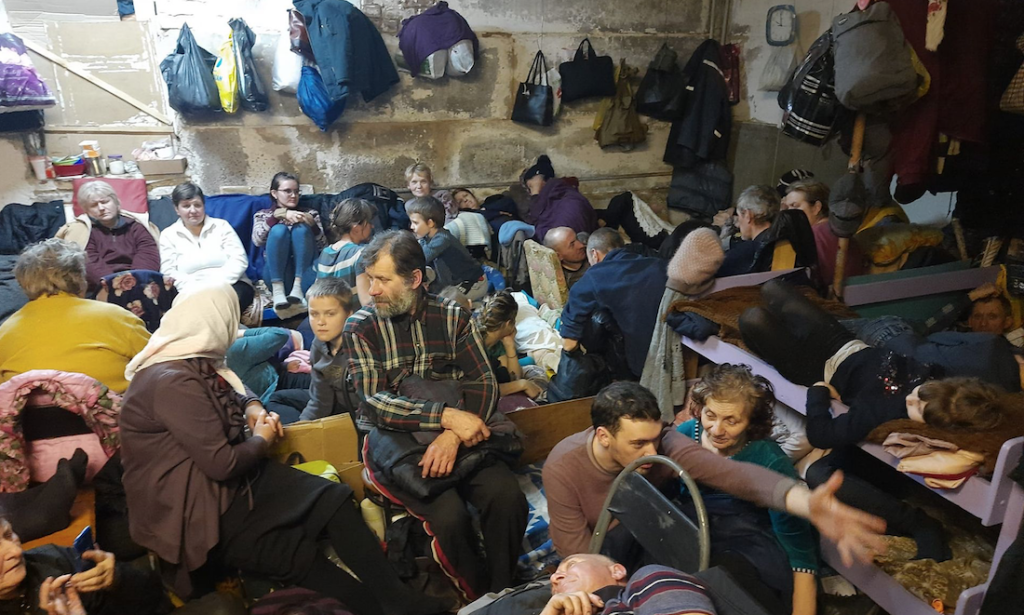
Worse than the German camp
There are only a few dozen steps from Galina’s house to the school. The woman agrees to show where they were kept for a whole month. A staircase leads to the side entrance – at the beginning of the occupation it was open, but then the door was boarded up.
Another exit from the basement leads to the backyard of the school. Outside on the doors is the inscription “Caution, children.” Among the 350 held here for a month, there really were children – 65 boys and girls, among them babies.
“The kids are screaming and screaming. It was impossible to change their clothes, wash them”, says Tamara Andreevna. The woman herself was in the basement with her grandson. He recalls that at first they were fed with two spoons of porridge. “The daughter ate with the boy, and I ate with my granddaughter. So I would pick it up for the sake of the child, pretending to eat. The boy ate and said: “Grandma, I still want to eat, I haven’t had enough”. Do you know how scary it is when a child has nothing to eat?”, the woman recalls with tears in her eyes.
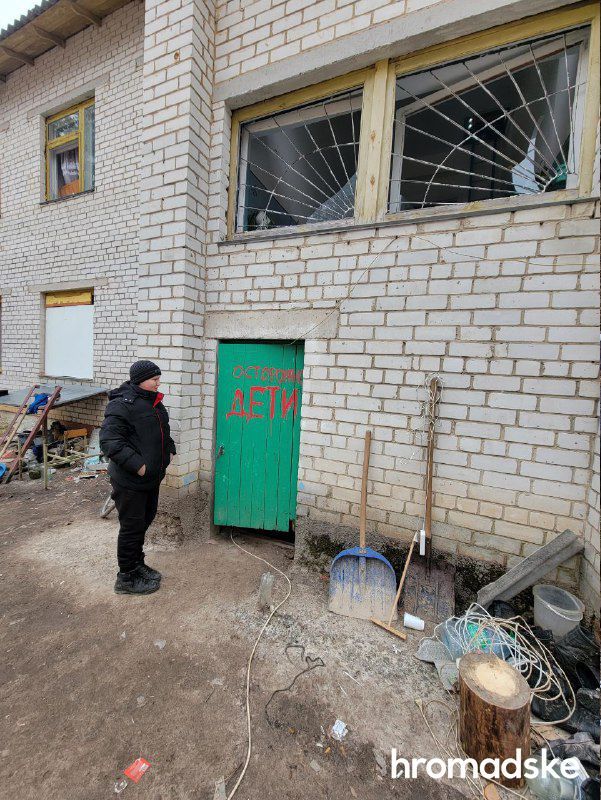
Galina did not see the Second World War, but from conversations with her elders she concludes that she experienced even worse conditions than they were in German concentration camps.
The first days and nights there was no light in the basement: people sat in the dark. The doors from the basement were opened at 7 am and people were allowed to go to the toilet in the backyard of the school. But there were days when the door was kept closed – then it was impossible to go to the toilet for several days. “We used buckets. 360 people. What do you think it is like?”, says Tamara Andreevna.
There was not enough air in the basement, it was hard to breathe. Without oxygen, we lost consciousness. We had people dying”, says Tamara Andreevna.
In the end, the occupiers allowed to make holes in the walls so that at least a little air could enter, and in the evening they were sometimes allowed to go out into the school yard to breathe. Sometimes such walks ended with shooting.
“As soon as we would not obey them, refused to go in because we wanted air, because it was hot and we couldn’t breathe in there – they would start shooting into the air, we would choke, fall and run into the basement”, recalls Tamara Andreevna.
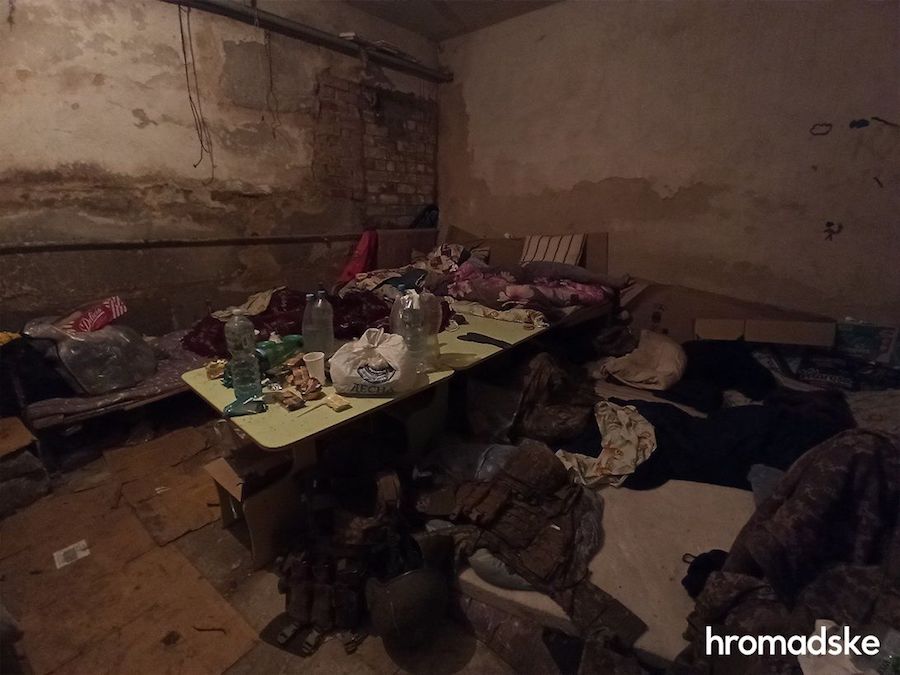
In the school yard, the Russians dug in around the perimeter, made dugouts and pits for heavy equipment. At the school itself, a headquarters was set up with a medical unit, a kitchen and a warehouse.
There were five rooms in the basement – bigger and smaller. In addition to them, the locals also lived in the corridor, despite the fact that the premises were not equipped for a long stay of people.
“There were no bunks or anything like that. They sat right on the sand. We were glad to have a piece of a cardboard box to put at least something under ourselves”, says Tamara Andreevna. According to the woman, she spent this month in a room five by five meters. There were 35 other people with her, including three bedridden and eight children.
“During the day we somehow sat, and at night we put our legs on top of each other in order to somehow stretch ourselves. The people who were sitting in the corridor and in the common room – there were much more of them – they generally slept while sitting and could not stretch at all”, says Taisiya Petrovna.
But even such conditions of detention could worsen. Taisiya recalls that one day “a bald boss with a nickname “Spider”” came into their room and announced that five more would join us. People began to resent, but not for long.
“He raised his machine gun and said: “My commander is wounded, very seriously, I have a tense atmosphere, and you will open your mouth at me?” What could we say? Nothing. What’s to be angry about? Two words, and you are a corpse”, said Taisiya Petrovna.
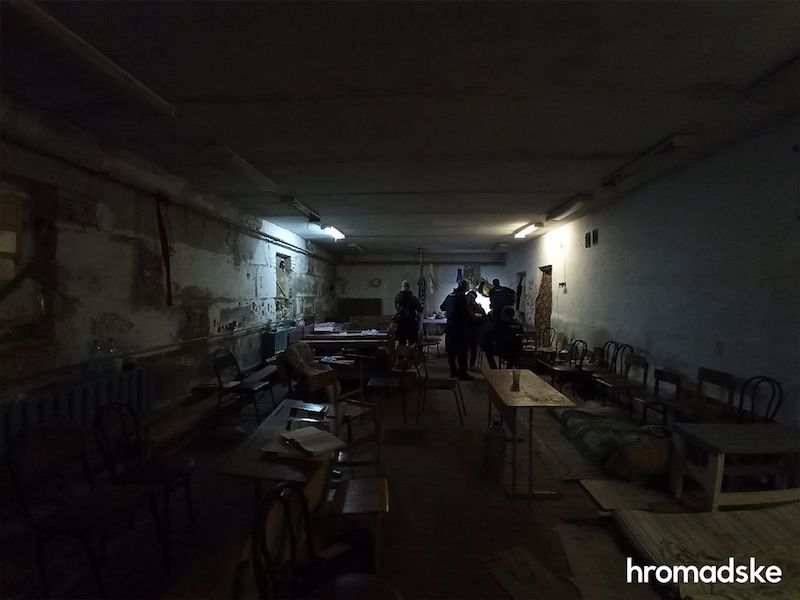
Fresh graves of Yagodnoye
“Two words and you’re dead” is not a play on words. In Yagodnoye they really killed for extra words. Chernihiv investigators said that the occupiers shot a woman who was indignant that the bodies of dead Russian soldiers were piled in her house. And she is not the only one from the locals who was killed by the invaders.
“Our neighbor was shot, a 30-year-old guy. For nothing. He was right in the yard when they arrived. They shot him and that’s all”, says pensioner Galina.
Residents of Yagodnoe tried to record every such case. Near the door at the exit from the basement, there are still names with dates of death, on the left – those who were killed. In a conversation with hromadske, Taisiya Petrovna recalled the names of the deceased, which we also saw on the list in the basement.
“The fact is that there are corpses of young guys. There are no more two Shevchenkos, no Tanya, Lena, Tolik. About five or six young people that we know”.
Inside, people were dying because of the appalling conditions: locals talk about 11-12 people who died right in the basement. “These are elderly people 70-80 years old who could not stand the atmosphere, the lack of air. When they were living freely, they were very energetic people – they ran, did something, then they could not stand day and night to sit on a chair”, says Taisiya Petrovna.
“They began to die, there was not enough oxygen. There was nothing to breathe with, we suffocated there. This is not a bomb shelter, but just a school basement”, adds Tamara Andreevna.
If people died at night, then until morning the bodies remained in the basement next to the living. And already when the doors were opened, the invaders carried out the dead and buried them in the cemetery, two or three people in one hole. After the liberation of the city, these graves were excavated to rebury the dead.

Hromadske
Vitaly, a volunteer from Kyiv, was among those involved in the reburial of people in Yagodnoe. He handed over several photographs taken in the village to the editors.
On one is the grave of a local resident Viktor Shevchenko. “He was shot in the head by the Russians. You can see it on the photo. And he was buried in his own garden, near his own house. It happened when everyone was herded into the basement of the school. According to the locals, he was killed because he had a weapon – a hunting rifle. He also often wore a camouflage pea jacket. Perhaps he was wearing it even at the moment when the occupiers saw him”, says Vitaly.
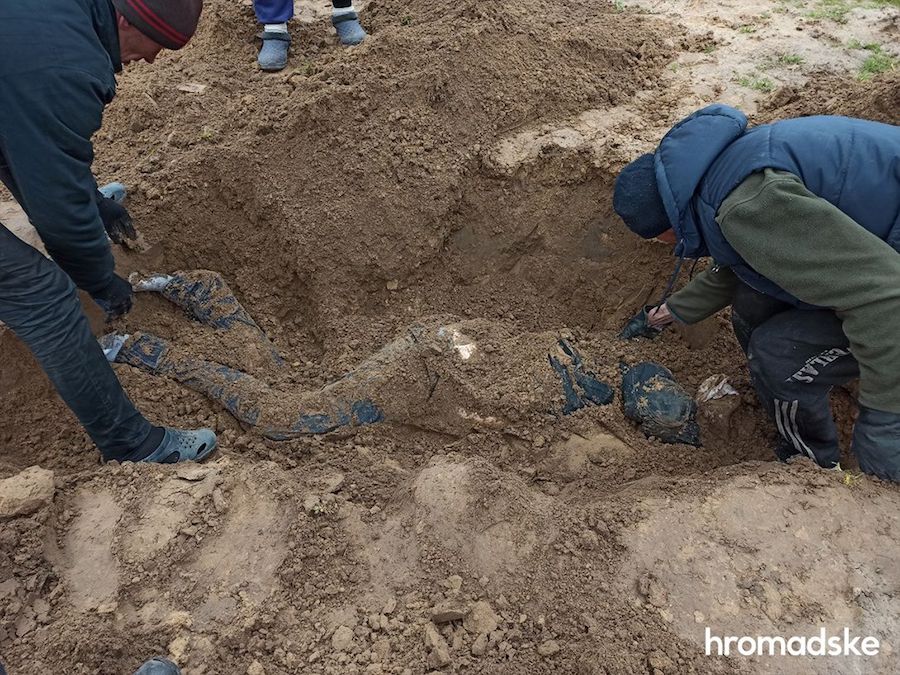
Hromadske
Another photo of Vitaly shows the remains of a body in a burned-out car.
“According to the preliminary version, it was a shelling of a car. The car went into a ditch, the driver was pulled out of the car and, it seems, they checked it, because documents were scattered around. Then this car was pulled out, the body was thrown into the back seat and the car was set on fire”, says the volunteer. According to the documents found, it could be Viktor Kirik.
The third photo also shows a burned car with a body. The car was parked on the highway near Yagodnoye, the man was shot in the head. No documents were found, no identity was established.
It is not yet possible to talk about the exact number of civilians killed in Yagodnoye and in the vicinity.
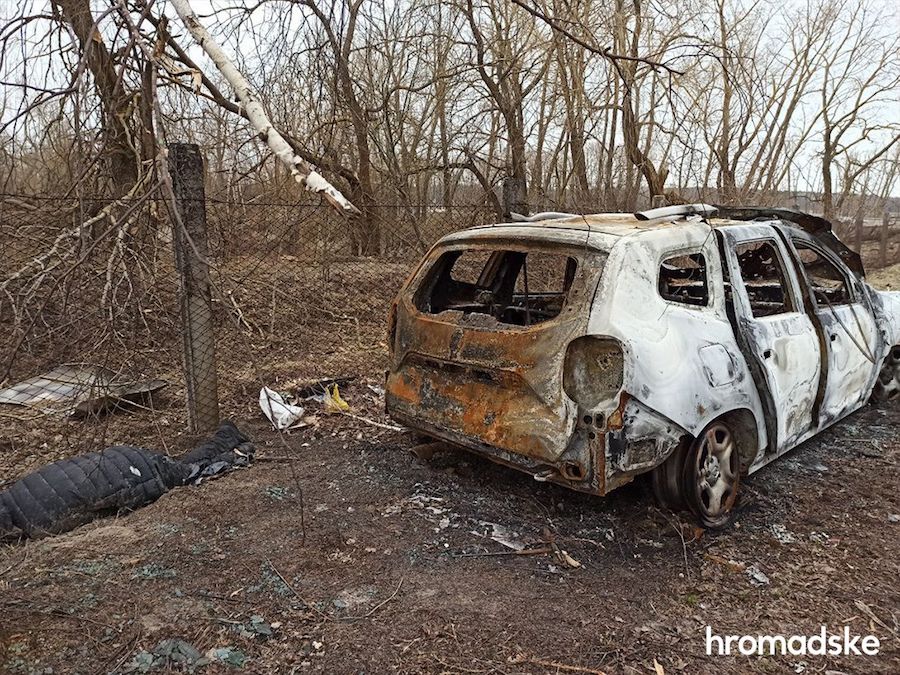
courtesy of hromadske
By the time the hromadske arrived, unidentified bodies still remained there. We found a grave just outside the school perimeter. On it is a homemade cross made of tree branches without marks.
“Once they brought two guys from Zolotinka (a village to the west of Yagodnoye – ed.), They went down the stairs to us, they didn’t even go into the corridor. After 10 minutes, they were taken away, taken out over the fence, shot and that’s all”, recalls Taisiya Petrovna.
Who tormented Yagodnoye
When the villagers returned to their houses after the basement, they were looted. “They took everything they could. From shorts with socks to jewelry and technology”, says Svetlana. In confirmation, the woman invites us to her apartment: in addition to damage from shelling, she also suffered from marauders. The floor is strewn with things that the invaders threw out of the cabinets.
In a neighboring courtyard, residents show broken equipment that looters from the Russian army could not take out.
“Our people lived well, there were two or three cars in each yard. TVs, plasmas. My son had a music center, cinema, plasma. They couldn’t stand it, they just smashed everything”, says Taisiya Petrovna.
In addition, the Russians also shat on the premises: instead of urinating in the toilets, they used buckets and cans that were left in apartments and houses.
In their observations of the invaders, the inhabitants of Yagodnoe came to the conclusion that in their village the aggressor’s army was represented by two nations. “There were Russians at school, and Tuvans lived in the village”, says Taisiya Petrovna.
The Republic of Tuva is the poorest region in Russia, and in 2020 Tuva was the leader in the number of murders per capita in the Russian Federation.
Volunteer Vitaly concludes: “That basement was both hard labor and salvation for the inhabitants of Yagodnoye. If they had stayed at home, there would have been much more victims from the atrocities of the Tuvans and the bombings”.
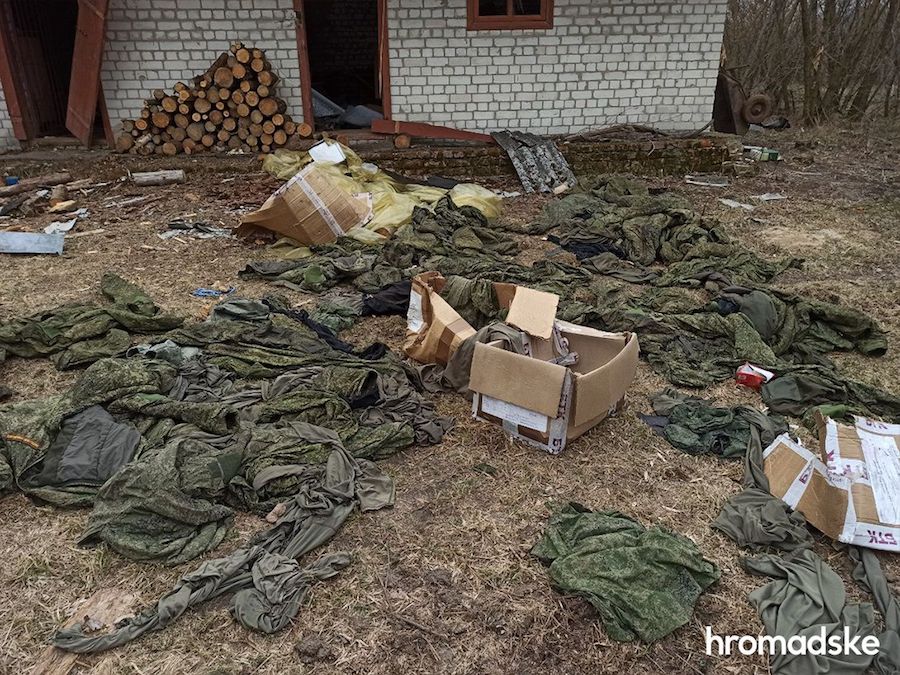
courtesy of hromadske
End of the camp
On the doors from the school basement of Yagodnoye, you can see the inscription “31 – ours have come.” Galina recalls that on the last night the occupiers closed this door early. In the basement, one could hear how artillery was covering the positions of the Russians, and at some point the equipment in the school yard started up.
“Buzzing means they are running away. We woke up in the morning and there was no-one there. Ours drove them out”, recalls Galina. The woman greeted the Ukrainian army with tears, and she already recalls her 22-year-old grandson, who was in the territorial defense.
“I lived for 72 years. Our parents saw the war, but we didn’t. Now we have seen it too. It’s scary”, concludes Galina. The woman still has nightmares about invaders coming back to the village again.










